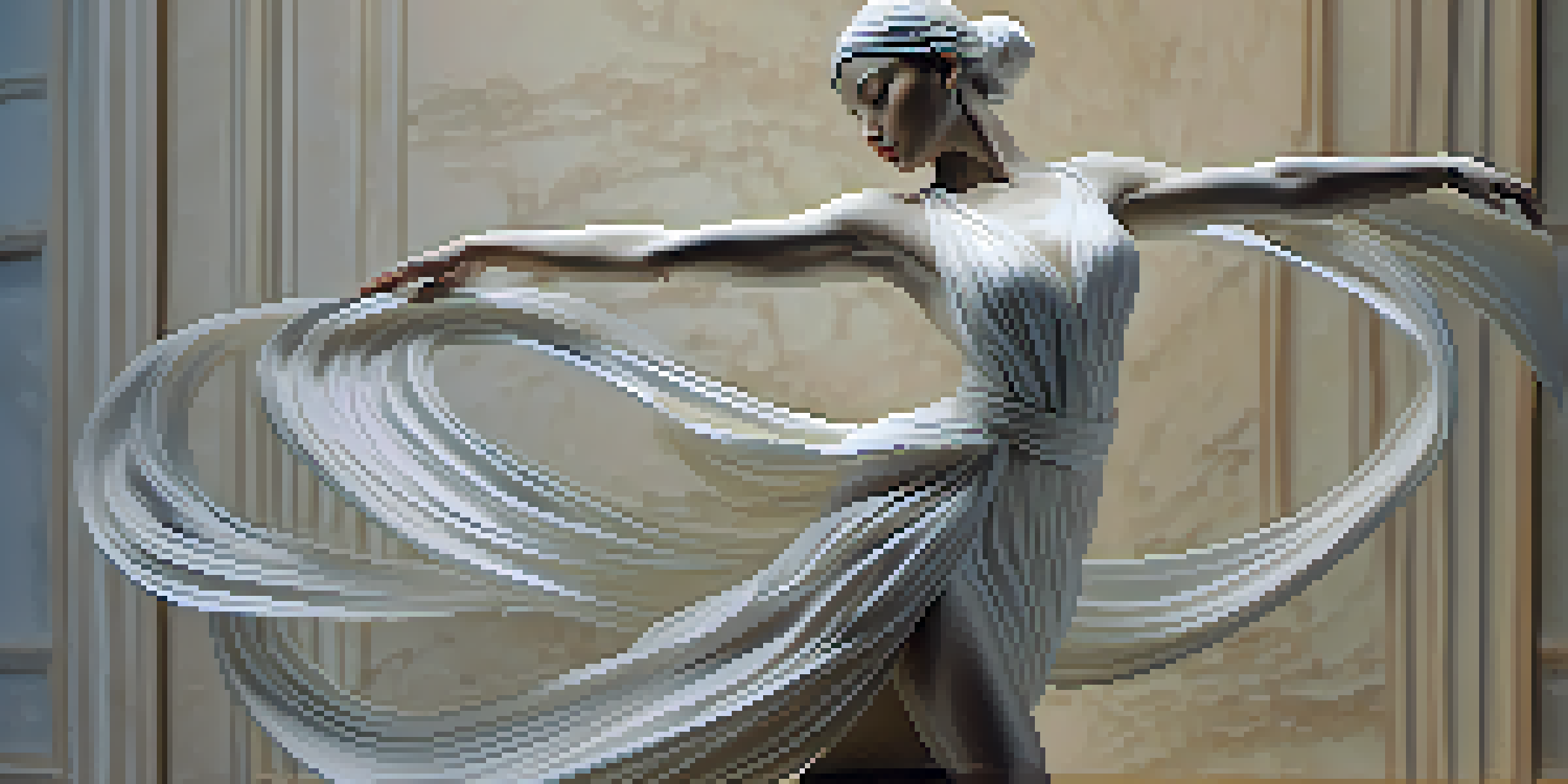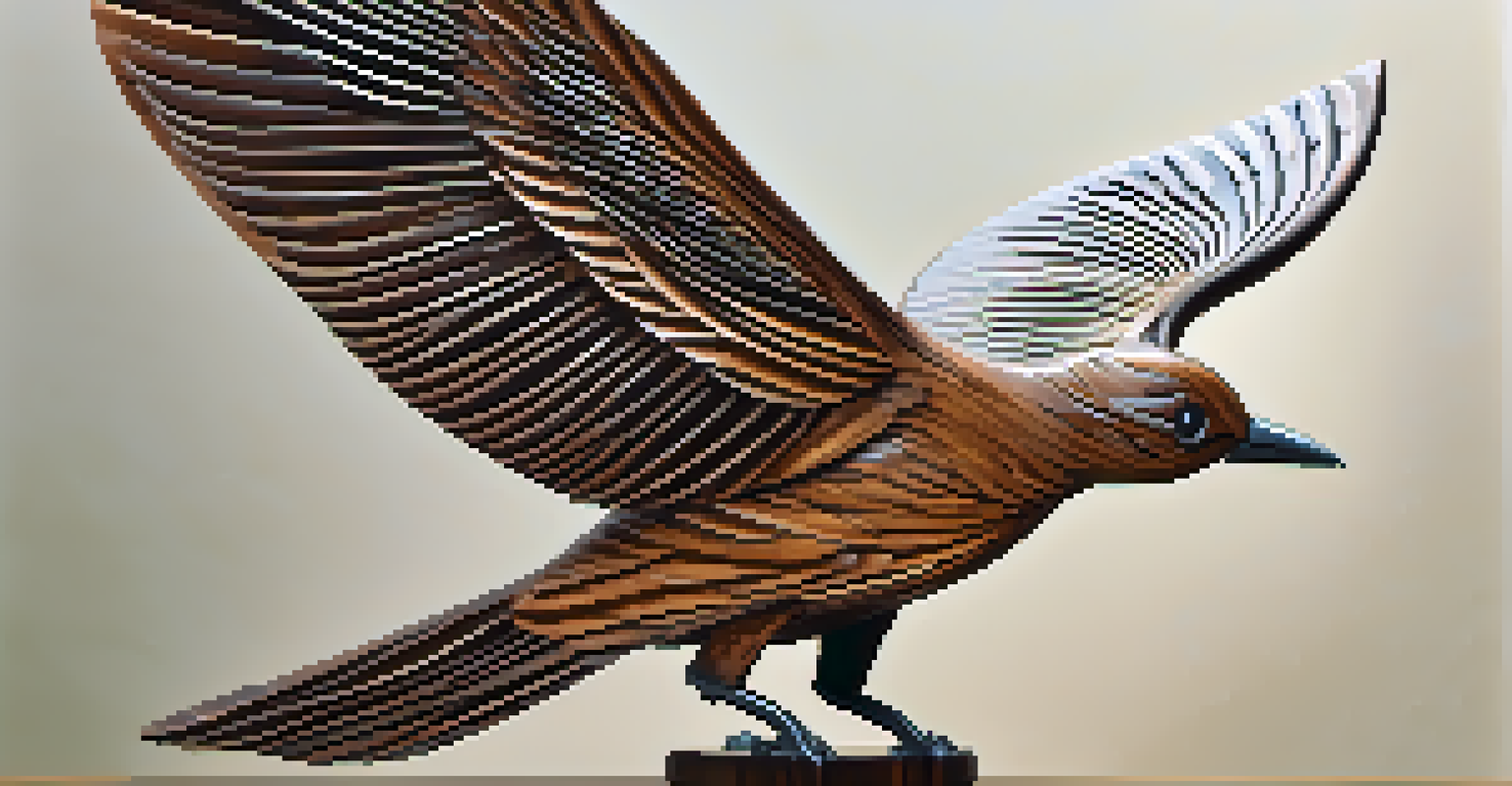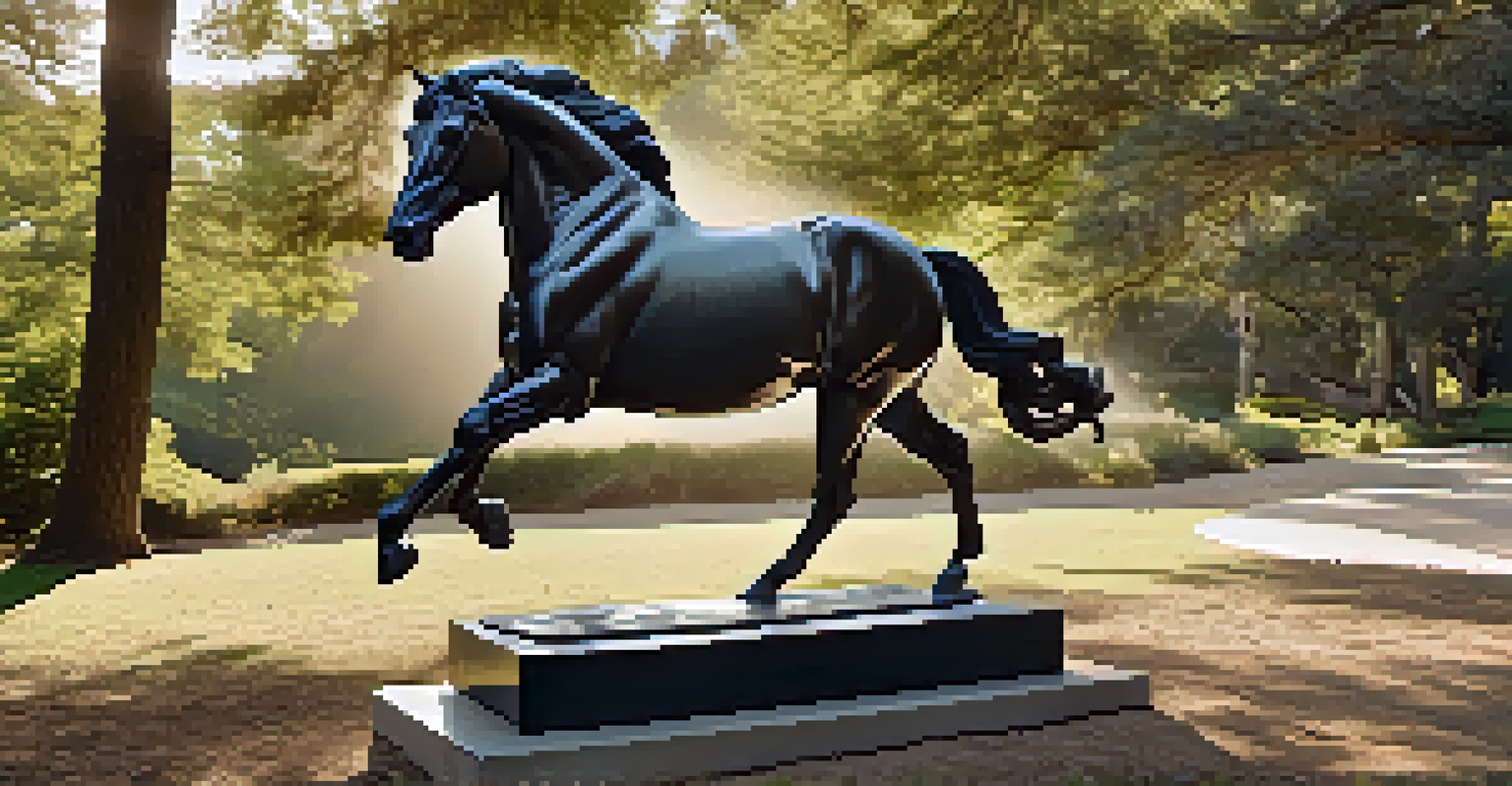Dynamic Movement in Carving: Principles that Engage Viewers

Understanding Dynamic Movement in Carving
Dynamic movement in carving refers to the illusion of motion created through design. Artists achieve this by incorporating curves, lines, and textures that guide the viewer's eye. It's not just about the physical form; it's about the energy that the sculpture seems to exude, making it feel alive.
Art is the most beautiful of all lies; it is a dynamic dance of realism and imagination.
Imagine a dancer frozen in a moment of grace—this is similar to how a carving can portray movement. The way the lines flow and the shapes interact can suggest action, inviting onlookers to perceive a story. This principle can transform a static piece into a dynamic experience.
Incorporating dynamic movement encourages viewers to engage more deeply with the artwork. They may find themselves moving around the piece, trying to grasp its essence from different angles. This interaction fosters a connection, making the carving memorable.
The Role of Lines and Curves
Lines and curves are fundamental elements in creating dynamic movement in carving. Straight lines can convey stability, while curves often suggest fluidity and grace. When artists skillfully blend these elements, they evoke a sense of motion that captivates the audience.

Consider a wave crashing against the shore; the undulating curves mimic movement and energy. Similarly, in carving, these flowing lines can lead the viewer's gaze, suggesting a journey through the piece. This visual path draws them in, creating intrigue and engagement.
Dynamic Movement Captivates Viewers
The illusion of motion in carving invites viewers to engage deeply with the artwork, transforming a static piece into a dynamic experience.
Moreover, the direction of lines can also impact the viewer's perception of movement. Lines that lead upward may evoke feelings of aspiration, while downward lines can suggest heaviness. Understanding this can empower artists to convey the desired emotion through their work.
Texture's Impact on Engagement
Texture plays a crucial role in enhancing the perception of movement in carving. Rough surfaces can create a sense of energy and chaos, while smooth textures often evoke calmness and serenity. By varying textures, artists can hint at the dynamics of movement.
The best artist has no conception that a marble block does not contain; it is the artist's understanding of movement that shapes the stone into something alive.
Think of a rocky mountain face versus a gentle hillside; the difference in texture profoundly influences how we perceive their movement. In carving, using diverse textures can draw viewers closer, encouraging them to touch and explore. This tactile experience deepens their connection to the piece.
Furthermore, light interacts with texture, creating shadows and highlights that can enhance the illusion of movement. As light shifts, so too does the perception of the carving, making it feel even more alive. This interplay invites ongoing engagement with the artwork.
Incorporating Themes of Nature
Nature is a rich source of inspiration for dynamic movement in carving. From the graceful bend of a tree branch to the swirling patterns of wind, these elements can be captured in stone or wood. By mimicking natural forms, artists can evoke a sense of organic movement.
For example, a carving of a bird in flight can encapsulate the beauty and freedom of nature. The way the feathers are arranged and the body is shaped can suggest motion, allowing viewers to feel as if they are witnessing a moment of life. This connection to nature makes the artwork relatable and engaging.
Nature Inspires Movement in Art
By mimicking natural forms, artists evoke organic movement that resonates emotionally with audiences and enhances their connection to the piece.
Additionally, using themes of nature can resonate emotionally with audiences. They often find familiarity in these forms, which can evoke personal memories or feelings. This emotional connection can enhance their overall experience with the carving.
The Importance of Scale and Proportion
Scale and proportion significantly affect how movement is perceived in carving. A larger piece may suggest grandeur and power, while smaller works can convey intimacy and detail. The right balance can enhance the sense of movement and engage viewers more effectively.
Imagine a giant sculpture of a galloping horse; its size amplifies the feeling of speed and strength. Conversely, a miniature version may invite closer inspection, allowing viewers to appreciate the intricate details that suggest motion. Both approaches can be equally engaging when done thoughtfully.
Artists must consider how the size of their piece will interact with its surroundings. A well-placed carving can create an immersive experience, drawing viewers into the movement it portrays. This strategic placement enhances the overall impact of the artwork.
Color as a Tool for Dynamic Expression
Color can be a powerful tool in conveying dynamic movement within carving. Vibrant hues can evoke energy and excitement, while softer shades may suggest tranquility. The choice of color can impact how viewers interpret the movement and feel about the piece.
For example, a carving painted in bold reds and oranges may suggest a sense of urgency or passion, while cool blues might evoke calmness. The emotional reaction to color can significantly enhance the viewer's engagement, making the artwork resonate on a deeper level.
Color Enhances Perception of Motion
The strategic use of color can convey energy, emotion, and dynamic movement, significantly impacting how viewers interpret and engage with the carving.
Moreover, contrasting colors can create a visual rhythm that mimics movement. Just as a conductor guides an orchestra, the right color combinations can direct the viewer’s attention, drawing them into the dynamic experience of the carving.
Creating a Narrative through Movement
A dynamic carving can tell a story, engaging viewers through movement. By depicting a series of actions or a transformation, artists can create a narrative that unfolds visually. This storytelling aspect invites the audience to explore and interpret the piece.
Think of a carving that captures a moment in a dance or a sequence of events in nature. Each detail contributes to the overall narrative, allowing viewers to immerse themselves in the experience. This engagement fosters a personal connection to the artwork, making it more memorable.

Furthermore, narratives can evoke emotions, prompting viewers to reflect on their experiences. A well-crafted story within a carving can resonate deeply, making the piece not just an object to observe but an experience to feel and remember.